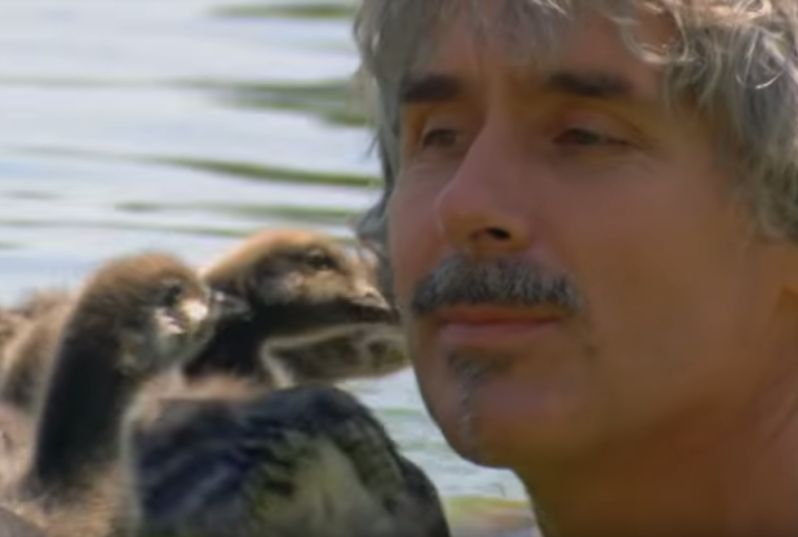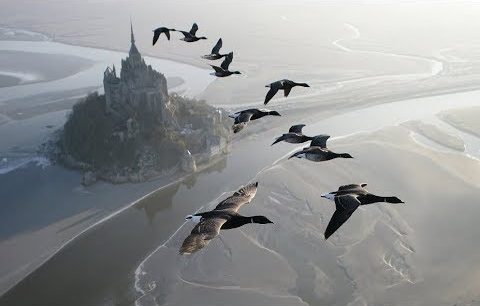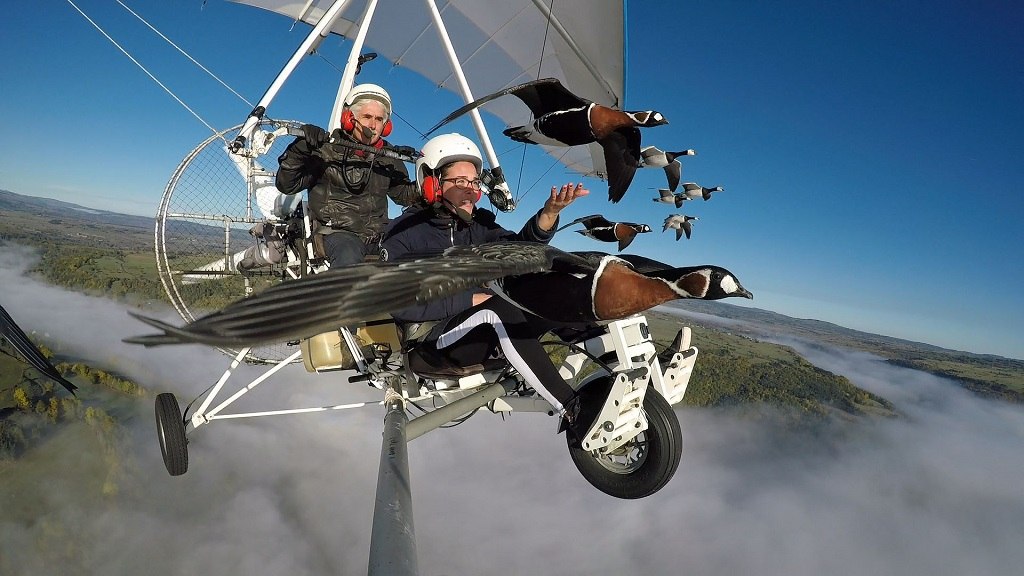
Every year from March to October, Christian Moullec, aka “Birdman,” takes to the skies aboard his two-seater adapted light aircraft, derived from hang-gliders. However, the 58-year-old Frenchman’s daily 30-minute flight is not just to enjoy the spectacular views, but to guide flocks of lesser white-fronted geese through safe migration paths which the birds can teach future generations.
The former meteorologist's quest to help the geese began in 1995 when he noticed their declining population in the wilds of Lapland, Sweden. To prevent their numbers from dropping further, Moullec tried to get the threatened species to follow him along migration routes that would protect them from bird hunters.

However, getting grown geese to follow his lead proved challenging. Not one to give up, Moullec decided to raise the geese from birth. The technique, first attempted by Nobel Prize-winning Austrian zoologist Konrad Lorenz, aka “the man who walked with geese,” allows the birds to imprint on Moullec, a behavior where young ducklings and gosling imitate and follow whomever they view as their parent. The conservationist, who gets emotional every time a flock flies way, says, “I am these birds’ adoptive father. They are in the house, I sleep with them right from day one. It’s quite a tie, but then afterwards, we can go on long journeys.”

To help raise funds and awareness of his mission to protect not just the geese but birds worldwide, Moullec often allows paying tourists to join him on the 30-minute-long flights aboard his microlight or a hot-air balloon. In addition to the trained birds flying alongside them, visitors, who come from as far as a 15-hour plane flight away, are treated to a variety of crane and geese species as well as breathtaking views of castles, cities, and even the Plomb du Cantal, Europe’s largest ancient volcano.
The conservationist often brings his camera along for the flights, capturing photos not just for their beauty, but for what they portray. Moullec believes the use of agricultural chemicals has taken a heavy toll on wild European birds, with more than a third disappearing in the last 30 years. “It’s a disaster,” he said. “My beautiful images with flying birds should be used to tell this story.”

As it turns out, it’s not just chemicals that are taking a toll on the world’s avian population. The American Audubon Society estimates that human installations like power lines, communications towers, and wind turbines kill more than 65 million birds annually. To try to reverse this trend and mark the centennial anniversary of the Migratory Bird Treaty Act, one of the oldest wildlife protection laws, the non-profit has declared 2018 “The Year of the Bird.” To mark the occasion, they are asking nature lovers around the world to commit to protecting the vulnerable animals for the next hundred years.
While that sounds onerous, all it takes is small actions like creating a bird-friendly environment by populating backyards with native plants, or helping scientists get an accurate snapshot of the world’s birds by counting the ones flying around your neighborhood. Hopefully, lawmakers around the world will help the cause by imposing stricter protection laws and setting aside special habitats to make sure our beautiful birds don’t disappear altogether.
Resources: nationalgeographic.com, euronews.com, dailymai.co.uk
